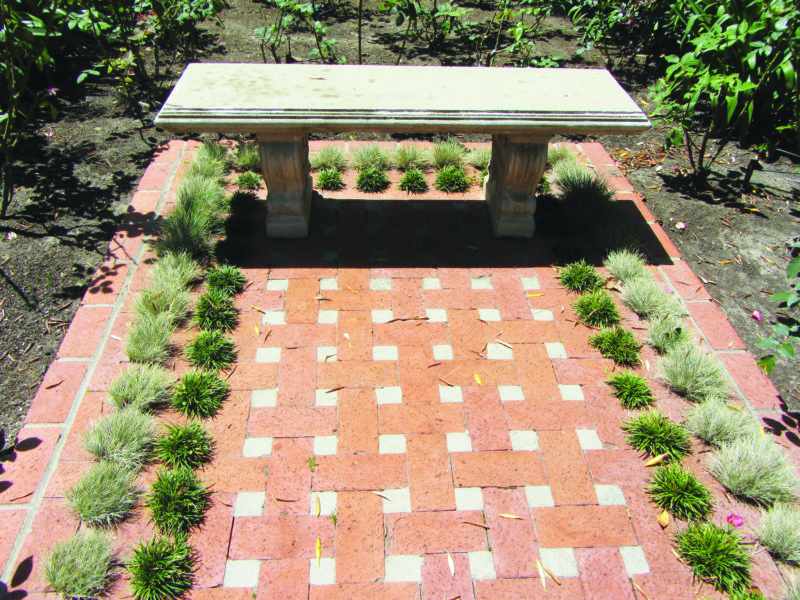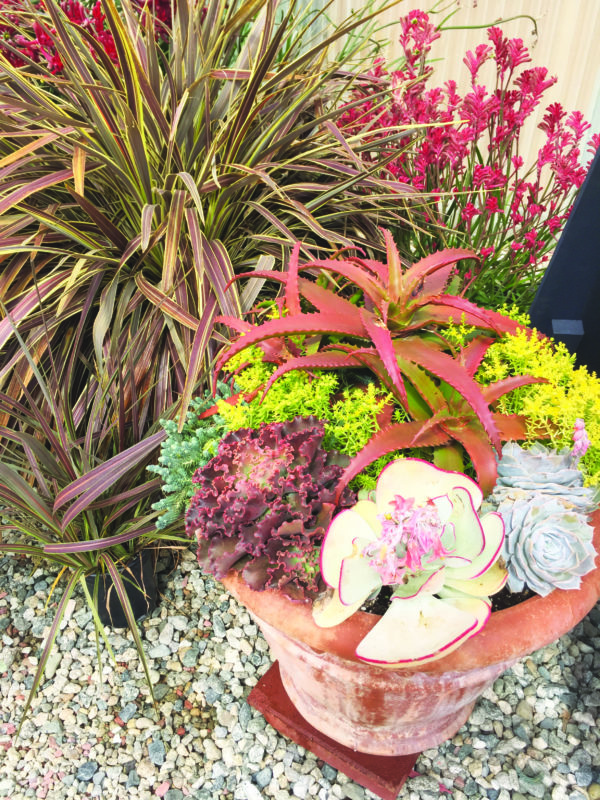June is the month to prepare your landscape for a long, hot summer. Like any project, the more efficient you are with preparation, the more successful the project will be. Here are some things you can do to make your garden successful this year – starting in June.
Start with a good garden clean up. Remove all left over brown material, cutting back to healthy plant material and raking out litter that could harbor insect pests or ignite if a cinder from a local wildfire should pass your way. Consider mulching empty areas with a light colored decomposed granite, compost, wood chips or gravel. Avoid dark colors when possible since they absorb heat and can become foot-scorchingly hot!

No non-living material is perfect; stone retains heat, compost is most efficient when moistened with our precious and expensive water, and wood chips are flammable. But you might find it artistic and practical to use different materials in different areas.
Other spaces may do well planted with attractive low water flowers or shrubs. (Most planting will be easiest when the weather cools in the autumn.)
Whatever you decide, using mulch is a good way to hold moisture in the soil and cool plant roots. It can be an attractive addition and a water-saving device for creating an artistic statement as well as making a landscape safer, more efficient, and easier to maintain when varied materials are thoughtfully designed into the garden.
Take another look at irrigation.Set irrigation systems for the most efficient watering. Make sure water is penetrating the soil and not washing away. Regularly check for leaks and breaks.
Adjust your controllers to deal with the longer, warmer and drier days. Set watering systems to irrigate early in the morning and look into an automatically adjusting system that will save you time and energy.
Put together soaker hoses and drip systems to keep your garden plants strong and healthy while reducing your water bills.
Most gardens will benefit from more than one type of irrigation system. Trees will like slow, deep watering, lawns need broad sprinklers, drought-tolerant gardens will do well with drip irrigation, and so on. A well-designed garden will make efficient use of space and materials. Good irrigation plans will build in the best ways to apply water to assure minimal waste and expense while delivering your plants the water they need.
Got compost?Dig it into the soil now. Our lean soil will appreciate any additional organic matter and their much-needed nutrients.
If you don’t have a compost heap this is a great time to start one as you clean up the blown leaves and winter die-off from the garden. Use compost over the surface of flower and vegetable beds alike. If you don’t have compost of your own, buy it in bags or try another mulch material like bark chips that will slowly break down but still offer up much-needed organic matter.
A top dressing of mulch will help keep moisture in the soil as we head into the long dry season. It will also insulate underground roots from baking sun.
Move from seeding and planting to maintaining and supporting. Plant seeds and starter plants of summer vegetables. Seeds of bush beans, carrots, radishes and beets can be planted every few weeks for quick, successive crops. Otherwise, keep all your other vegetables, fruits and flowers inspected for insect invasions, properly pruned and well-watered and fed. Make sure your soil has been turned and organic amendments are dug in. Don’t let newly planted additions or transplants dry out and give them some temporary shade for a day or two if hot sun is forecast.

Keep plants looking neat by supporting them with trellises, pruning, and tying. Extend flowering by deadheading – snipping off spent flowers to redirect energy from forming seeds to creating more blooms. And remove weeds as they sprout before the roots go deep and the job becomes harder.
Keep lawns cut and properly irrigated. If you don’t have a drought-tolerant, well established lawn area, it probably will not fare well in the summer without excessive watering and time consuming fussing. June is still a good time to replace your grass with a more water efficient variety or take out lawn areas that are not vital and replant them with an attractive water-wise garden. The city is once again offering rebates for lawn removal, so consider many of the many alternatives you could try that would look great, reduce water bills and maintenance as well as add more useful and productive space to your outdoor space.
Look for ideas in books, online, in magazines, visit local public gardens or call a local garden designer for customized, creative garden solutions to fit into your lifestyle.
Consider making the best of your garden space. Small spaces can benefit from container gardens and larger spaces can be beautiful and easily maintained with native gardens. For larger yards consider cooling water features and shade covers to make for a more comfortable outdoor summer. And don’t forget to add a cools spot for the kids and pets! Do it in June before July heat makes you hide indoors.













